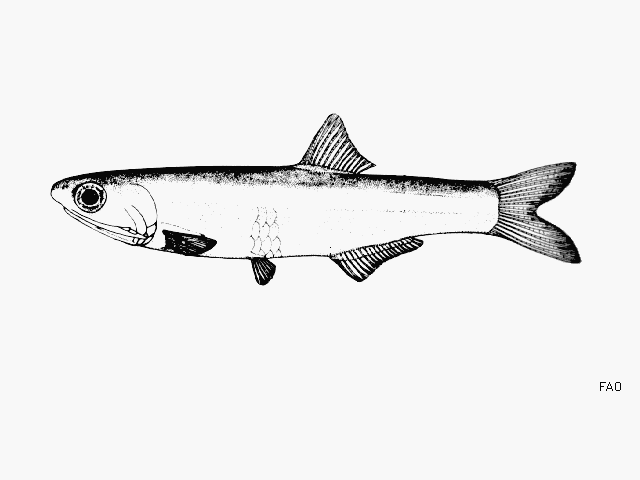| Engraulidae (Anchovies), subfamily: Engraulinae |
| 10 cm TL (male/unsexed) |
|
pelagic-neritic; marine; depth range 0 - 60 m |
| Western Atlantic: North Carolina, USA to northern Gulf of Mexico; Cuba and probably throughout the Greater and Lesser Antilles; Yucatan, Mexico to at least Santos, Brazil. |
|
Dorsal spines (total): 0-0; Anal spines: 0-0; Anal soft rays: 16-21. Snout pointed about 3/4 eye diameter; maxilla long, tip pointed, projecting at least 1/2 eye diameter beyond second supra-maxilla, reaching beyond hind border of pre-operculum; gill cover canals of walkeri-type. Anal fin origin below midpoint of dorsal fin base; anus nearer to pelvic fin tips than to anal fin origin. Silver stripe along flank, about pupil diameter, lost on preservation. |
| Occurs in coastal waters, forming dense schools along beaches in water of 1 m or less. |
|
Least Concern (LC); Date assessed: 24 August 2012 Ref. (130435)
|
| harmless |
Source and more info: www.fishbase.org. For personal, classroom, and other internal use only. Not for publication.

